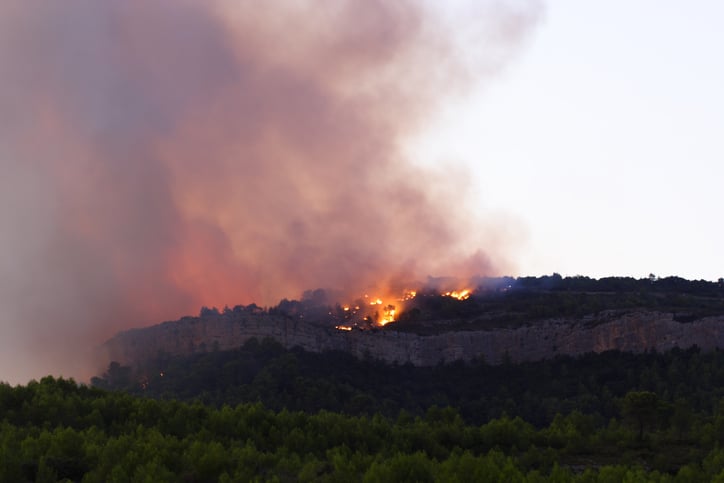Europe continues to swelter through a record-breaking summer, with large swaths of the region enduring heatwaves. As climate change continues to wreak havoc on weather systems, heatwaves have become a regular and widespread occurrence worldwide.
The UK has seen some of the harshest weather, with temperatures hitting historical records of 40C. The previous record was set in Cambridge three years ago, at 38.7C. This week’s extreme temperatures prompted the state meteorological agency to issue its first ever ‘red’ warning for heat.
“For the first time, we’ve issued a severe weather emergency response in summer,” said London Mayor Sadiq Khan, “Normally we do this in winter when it gets really cold”. The UK is particularly underprepared for extreme heat. Average July temperatures in the country reach daily highs of 21C, and nightly lows of 12C.
Very few UK homes have air conditioning, or other in-built measures against this year’s extraordinary temperatures. The best estimates report less than 5% of English homes have air-con.
It might be hard for many Aussies to relate – for most of us, heat-preparedness is taken for granted. Most of my peers know how to keep safe in case of bushfires, how to spot symptoms of and avoid heatstroke, and water safety measures. Not so in the UK.
A large section of the country, from London to Manchester and Leeds, sits under Britain’s first ever ‘extreme’ heat warning. That designation means even healthy individuals are at risk of death from the heat.
Official heat death statistics haven’t yet been published, but at least ten Brits have already drowned while trying to cool off. Trains and schools have shut, and runway at the Royal Air Force’s Brize Norton air base melted.
Beyond the UK
While regions of Spain, France, and Portugal are more accustomed to heat than England, the heatwave has been just as devastating for them. Forest fires are ravaging thousands of hectares in these countries, with Italy, Switzerland and Greece are also experiencing unusually high temperatures.

Spanish authorities reported at least 510 heat deaths in the week of July 10th-18th, and temperatures have reached a whopping 45.7C. Portugal’s numbers are even higher, with the period 7th-17th July seeing 659 heat-related deaths.
This May was France’s hottest on record, followed by a heatwave in June, and now another. Earlier this month heat spells plagued Poland and much of Eastern Europe. And we’re only halfway through summer.
Scientists report that heatwaves in Europe are increasing at a faster rate than almost anywhere else in the world – both in frequency and intensity. Contributing factors include general global warming, as well as changes in the jet stream, warming in the Arctic, and shifting Atlantic currents.
Regardless, experts like Friederike Otto of Imperial College London, agree that “Climate change is driving this heatwave, just as it is driving every heatwave now.” Parts of China and the US have also seen heatwaves in recent weeks, and devastating temperatures scorched much of South Asia earlier this year.
Follow Maddie’s journalism on Twitter.
Sign Up To Our Free Newsletter